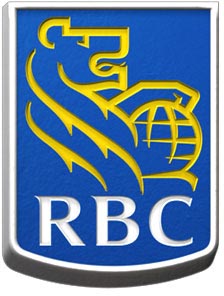 THUNDER BAY – As the housing market goes, so too goes demand for wood products to build new homes. While the overall trend in Thunder Bay according to the CMHC is stable, the same can not be said, according to the RBC. Ontario’s housing market continues to be under some mild affordability-related stress, which slightly eased off in the third quarter, according to the latest Housing Trends and Affordability Report released today by RBC Economics Research.
THUNDER BAY – As the housing market goes, so too goes demand for wood products to build new homes. While the overall trend in Thunder Bay according to the CMHC is stable, the same can not be said, according to the RBC. Ontario’s housing market continues to be under some mild affordability-related stress, which slightly eased off in the third quarter, according to the latest Housing Trends and Affordability Report released today by RBC Economics Research.
“Ontario’s hot housing market cooled off in the spring and summer, as the number of home resales fell while homes for sale grew – causing a notable moderation in the rate of price appreciation in the third quarter,” said Craig Wright, senior vice-president and chief economist, RBC. “We’re currently seeing more balanced market conditions and this provides scope for further easing in affordability-related stress in the province near-term.”
RBC’s housing affordability measures, which capture the province’s proportion of pre-tax household income needed to service the costs of owning a home at market values, declined across all housing types (a decrease in the measure represents an improvement in affordability). The RBC measure for the benchmark detached bungalow fell by 0.6 percentage points to 42.6 per cent, the standard two-storey home eased by 1.1 percentage points to 48.5 percent and the measure for condominium apartments declined by 0.5 percentage points to 29.2 per cent.
“The declines we saw across measures essentially rolled back the two consecutive quarterly increases that took place in the first half of this year,” added Wright.
Toronto market cools further; affordability strain eases slightly
Home resales in the Toronto-area tumbled nearly 12 per cent quarter-over-quarter, signalling a further cooling in the market. RBC notes that an increased supply of homes available for sale relative to demand significantly weakened the strong hand sellers had earlier this year, leading to modest quarterly price declines in some housing categories.
“The slowing pace of price increases made things a bit easier for prospective homebuyers in Toronto – the share of household budget needed to cover the costs of owning a home at market prices fell for the first time this year,” Wright noted.
Affordability exerted some greater than usual stress on the Toronto market, despite RBC’s measures declining between 0.7 percentage points and 1.3 percentage points in the third quarter, as the measures still stood modestly above their long-term averages.
Ottawa housing market slows
After holding steady in the second quarter, housing affordability slightly improved in the third quarter in the Ottawa-area market, with RBC measures edging lower across all housing categories between 0.1 and 0.5 percentage points.
“The cost of owning a home at market prices is taking a bigger bite out of household budgets in Ottawa than has been the case, on average, since the mid-1980s, indicating that local homebuyers experienced greater affordability strain in the third quarter. This may have been among factors weighing on housing activity in recent months,” explained Wright. “Home resales fell 5.4 per cent in the third quarter, constituting the largest quarterly decline in the area since mid-2010.”
Where housing affordability stands in Canada
RBC’s housing affordability measure for the benchmark detached bungalow in Canada’s largest cities is as follows:Vancouver 83.2 per cent (down 5.8 percentage points from the previous quarter); Toronto 52.4 per cent (down 0.7 percentage points); Montreal 40.2 per cent (up 0.1 percentage points); Ottawa 38.7 per cent (down 0.4 percentage points); Calgary 38.3 per cent (down 0.7 percentage points) and Edmonton 31.1 per cent (down 0.6 percentage points).
The RBC Housing Affordability Measure, which has been compiled since 1985, is based on the costs of owning a detached bungalow (a reasonable property benchmark for the housing market in Canada) at market value. Alternative housing types are also presented, including a standard two-storey home and a standard condominium apartment. The higher the reading, the more difficult it is to afford a home at market values. For example, an affordability reading of 50 per cent means that homeownership costs, including mortgage payments, utilities and property taxes, would take up 50 per cent of a typical household’s monthly pre-tax income.
Highlights from across Canada:
- British Columbia: Affordability hurdles still tough to clear
British Columbia’s housing market experienced improvements in the third quarter of 2012, and yet, affordability conditions remained the poorest across Canada. RBC measures fell between 2.0 percentage points and 3.7 percentage points, the largest drops across Canada. The situation remains less severe elsewhere in the province; the share of income needed to carry ownership costs in Victoria, for instance, is almost half the share in Vancouverfor some housing types.
- Alberta: Attractive affordability contributes to market renaissance
Alberta’s housing market enjoyed firm and steady resale activity, balanced demand-supply conditions, moderate home price increases, and improved housing affordability. Third quarter affordability measures for the province edged lower – between 0.2 percentage points and 0.4 percentage points -remaining below their long-term and the national averages.
- Saskatchewan: Little evidence of affordability strain
Significant deteriorations in housing affordability in the second quarter in Saskatchewan were largely reversed in the third with RBC measures in the province falling between 0.9 percentage points and 1.3 percentage points. The measures stood just slightly above their long term averages for all housing categories, indicating little in the way of undue affordability induced strain on the market.
- Manitoba – Market losing some of its steam; minimal pressure on affordability
Declining housing prices spurred a notable improvement in housing affordability in Manitoba over the third quarter. RBC measures fell between 0.6 percentage points and 1.6 percentage points, which fully unwound the deterioration that occurred in the prior quarter. Provincial affordability levels sit slightly higher than their averages since the mid 1980s, but remain well below the corresponding national averages.
- Quebec: Second straight affordability improvement
Housing affordability improved for the second straight quarter in Quebec, with RBC’s measures edging lower across all housing types in the province, between 0.6 percentage points and 0.8 percentage points, in the third quarter. For the most part, levels are only slightly worse than the average historical level, indicating that prospective homebuyers in Quebec may feel minimally stretched budget-wise, if they bought a home at current market prices.
- Atlantic: Affordability position remaining quite stable
Housing affordability in Atlantic Canada improved slightly across the board, with RBC measures in the region inching lower by 0.2 percentage points to 0.7 percentage points relative to the previous quarter. Affordability measures have been reasonably stable over the past three years in the region, showing no discernable trends on either the up or down sides.






